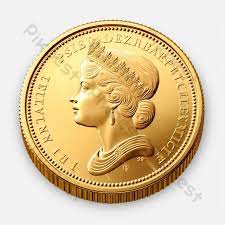Decentralized finance (DeFi) emerged in 2020 when blockchain developers launched new applications and services that allowed users to borrow and earn money using their cryptocurrency coins. The sector began to develop in 2021 as the adoption of cryptocurrencies increased.
The total value locked (TVL) in blockchains is a popular indicator of the size of the DeFi market. That figure reached $259 billion on Dec. 1, up from $15 billion a year ago, according to DeFi Llama.
DeFi challenges the traditional financial sector
DeFi can refer to financial applications, services, and protocols built on public blockchains that run smart contracts. A smart contract is a code stored on a blockchain that automatically executes transactions without a centralized intermediary, providing high processing speed and lower fees than in a traditional banking system.
As consultants Ernst and Young wrote in a recent report: “If you apply this decentralized peer-to-peer model on a global scale to the various forms of financial transactions that require intermediation today (for example, secured lending, interest-bearing deposits, or investment portfolio management), the potential impact on existing the global financial system and its intermediaries will become significant.”
By implementing the tokenization of real assets, it is possible to come to the conclusion that shares, real estate, art and other physical assets can also be traded on the blockchain.
In addition to its own blockchain cryptocurrency, ether, other coins for DeFi applications also work on the blockchain. Terra, Binance Smart Chain (BSC), Avalanche, and Solana have also evolved into smart contract blockchains, each with over $10 billion worth of TVL. With transaction fees on the Ethereum blockchain becoming prohibitively high in some cases, some of the most promising DeFi coins have been launched on multiple blockchains.
DeFi Applications
The total market capitalization of DeFi tokens has surpassed $100 billion of the total crypto market capitalization of $2.25 trillion, data from CoinMarketCap revealed on Dec. 21. If you are planning to invest in this sector, then you can first look at the top DeFi tokens by market cap.
DeFi applications use the protocol token to enable transactions – as application usage grows, so does the demand for the token, increasing its price. This makes such tokens potentially attractive investment assets.
The largest tokens by market value are among the best representatives of DeFi coins.
Terra (LUNA)
The Luna coin is used for staking in the Terra protocol, which runs on the Ethereum blockchain. It is used for mining coins and voting on governance proposals. The price of the Luna token has risen rapidly from less than $1 at the beginning of 2021 to an all-time high above $80 this week, with a return of over 12,000% YTD.
Terra uses stablecoins (cryptocurrencies pegged to fiat currencies) to enable transactions in global payment systems.
fAs the Terra ecosystem expands, the demand for Terra stablecoins is expected to increase, creating demand for Luna. Terra uses an algorithmic market module that incentivizes users through arbitrage opportunities to exchange Luna and Terra coins at favorable exchange rates.
Several Ethereum-based applications such as SushiSwap DEX, automated market maker (AMM) Curve Finance, and DeFi lender Aave have been launched on Avalanche and Ethereum.
Avalanche has three interacting blockchains: an exchange blockchain for native avax tokens; blockchain of contracts, in which smart contracts are placed; and blockchain platform coordinating blockchain validators. The three blockchains use different consensus mechanisms, but all nodes validate every transaction.
The price of the avax token reached an all-time high in November of 146.22 USD, which has resulted in an increase of more than 4500% since the beginning of the year. AVAX has a market capitalization of $30.3 billion at the time of writing (December 22), more than double that of the next largest DeFi token.
Wrapped Bitcoin (WBTC)
fA network of custodians and merchants ensures that WBTC remains pegged to the price of Bitcoin so that users can transfer liquidity between the Bitcoin and Ethereum networks.
According to CoinMarketCap, WBTC has a market capitalization of $12.8 billion at the time of writing (December 22), with 258,840 tokens in circulation.
Uniswap (UNI)
Uniswap DEX (decentralized exchange) was launched in November 2018 making it one of the first automated market makers. Uniswap launched its native governance token, UNI, in September 2020, giving users the opportunity to earn profits as well as the right to vote.
In April, it reached an all-time high of 44.97 USD, growing along with the wider cryptocurrency markets. But it was unable to join subsequent rallies when other DEXs appeared. Currently, on December 22, it is trading around 15.5 USD.





